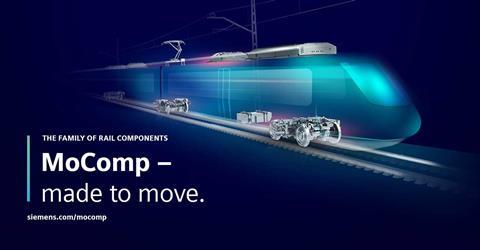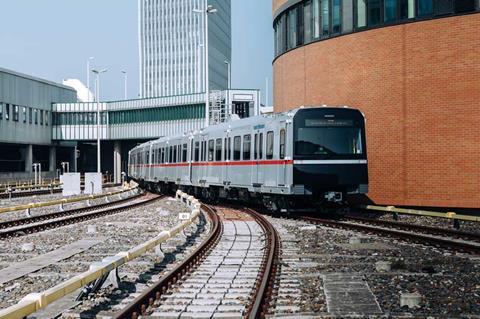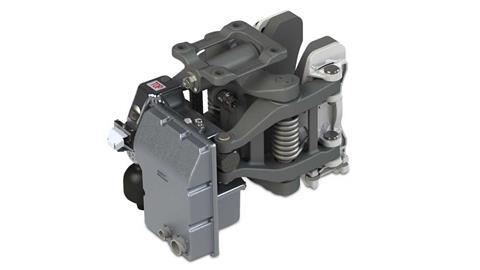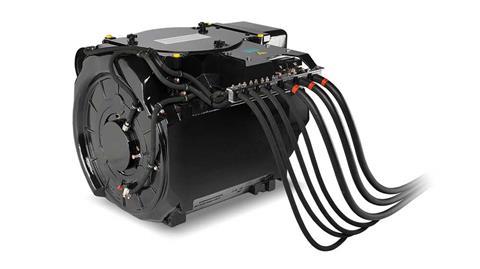Dr. Dmitry Kuznetsov is the Head of Account Management for Railway Components at Siemens Mobility. He’s a fourth-generation railroad professional who’s worked for Siemens Mobility in various functions since 2012. We asked him about the specifics of the rail components business and what role MoComp plays in these markets.

Dmitry, what are four good reasons to choose MoComp rail components that you’d like to highlight for your customers ?
From my point of view, it’s very straightforward: The obvious reason is our ability to develop rail components from the system-wide perspective of a vehicle manufacturer. Moreover, we also focus on the long-term relationships with customers as partners, we have a broad range of innovative products – and, as a fourth one, – the quality, which is a given.
How important is it to have an extensive product range?
The main innovations in rail vehicles today are in one way or another related to rail components. The broader the portfolio, the more ways we can help our customers succeed based on the innovative proposals from auxiliary or traction converters, motors, gear units, brake systems, bogies and pantographs for rail vehicles of all types. These components working together at the system level create new playfields with more opportunities and expand horizons further. We call such offerings “engineered components,” and they allow us to provide increased energy efficiency, better weight management, system integration, and increased reliability to our customers. This is my favorite topic.

Partnership is a big word. What does it mean to you?
I consider partnerships with our customers to be key part of our daily operations, whether it is tailored, individual manufacturing or platform and standard components. Our philosophy is to focus on long-lasting win-win relationships with customers – only so one can deliver reliably for many years in the rather small railway market, where a lot of the stakeholders have known each other for decades.
We collaborate with our partners in a tailored-to-the-task approach that’s separated from our in-house vehicle business. The foundation of this successful approach is our agile Account Management organization, which has its own system engineering and offer management teams dedicated solely to the component business.

So customer-specific modifications aren’t a problem?
Over the course of our 140-year history of delivering rail components, we’ve learned very well that there’s no one-size-fits-all product. That’s why we conduct our development alongside our customers based on our strong portfolio of modular building-blocks. We call this approach “engineered components through co-creation.”
It’s always feasible to create products that optimally match the project and vehicle-specific requirements thanks to all the degrees of freedom in our modular portfolio – and the closer our proximity to the customer, the shorter the iteration steps to this goal. As I mentioned above, this is what I like in our job the most: It’s not a “commodity business” approach but rather it’s rooted in our interactions and dialogue with our partners. In times of limited resources and capabilities on the market, this also helps us minimize risks for our customers.
As a global player, you also ensure a close proximity to your local customers. What does that look like?
Our motto is “As close as possible.” Close to the customer as well as their market, so that we’re familiar with what really counts in their business, and we can help them achieve efficiency along with all the technology. Partners also value speed – from support to delivery – from a local partner. This may include local production to achieve optimal compliance with the local content requirements that may exist for that vehicle. Fortunately, our offerings are already derived from nine different production sites worldwide, which are complemented by our local competence centers and worldwide service organization.
Our customers benefit from this broad footprint both in their “local for local” and “for-global” business, which makes our established portfolio available worldwide. Based on our existing portfolio and project experience, we help our partners open new markets where our technology is already known. This often offers a shared Unique Sales Proposition to the vehicles’ end customers.

Does rail component innovation come easy to MoComp?
It’s clear that groundbreaking innovations like air-free brakes don’t just fall from the sky. In this example, the development took ten years, and we’re proud to see that Wiener Linien’s X-Wagen is already in passenger operation using these brakes. And the benefits are substantial: Trains become operational and fit for service faster, they’re lighter, and they have a highly simplified compressed-air system on board thanks to brake-by-wire. This means that they save resources and the associated human effort. On the other hand, think about the new silicon-carbide semiconductors. The first applications already demonstrate a new degree of freedom for optimizing the energy efficiency of traction systems, including an increase in energy efficiency in both the inverter itself and in the entire traction system. In a typical regional multi-unit train, this means more than 10 percent increase in efficiency versus a state-of-the-art conventional system! Add to this the fact that the converters may be used to optimize other parameters: for instance, traction motors in motion can be made 10 dB(A) quieter (half the noise to the human ear). As you can see, innovations aren’t just exciting, they also need to be economically efficient and suit the application!

And my last question for today: What about your vision for MoComp? Where do you see MoComp in a few years?
The team and I are working hard on realizing our shared vision: to make MoComp the number one choice for partners who are looking for reliable traction products and solutions. Since our introduction of the brand and portfolio, the most important benchmark has been reached: gaining the trust of our partners who are rolling stock producers. We hear feedback that makes us deeply proud of the solutions we deliver. And this makes me believe that there’s nothing impossible for a highly engaged team!
MoComp’s fields of innovation
- Air-free brake system in operation on the first line!
- Permanent-magnet synchronous machines
- Traction motors with increased rotational speed and optimized gear units
- Auxiliary and traction converters that use the latest silicon-carbide technology
- Lightweight bogies
- Digitalization and monitoring of components – incl. our bogie diagnostics-highlight
- Highly efficient traction and vehicle control


















